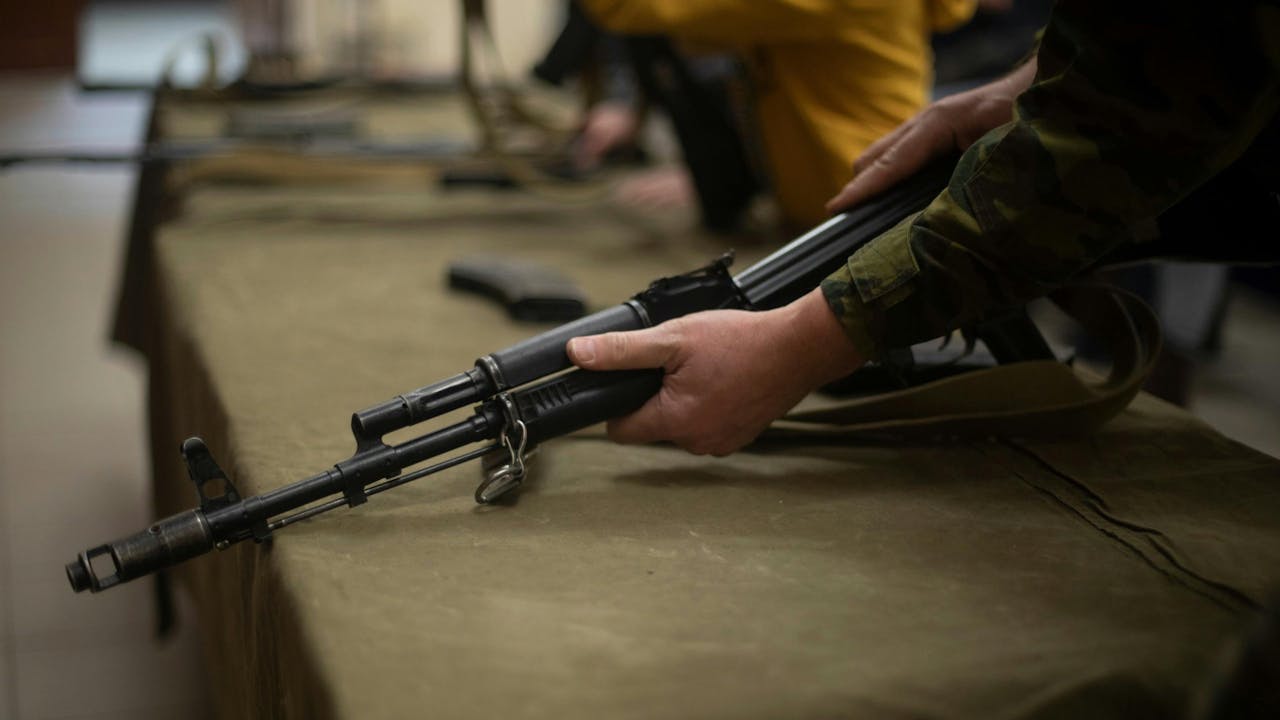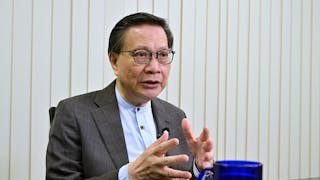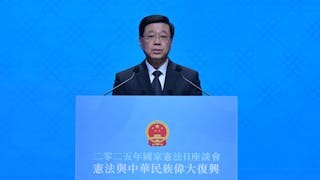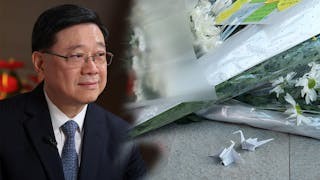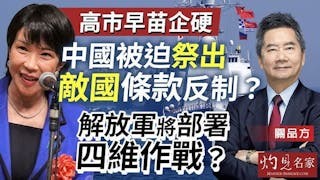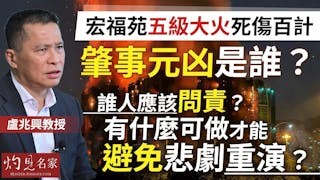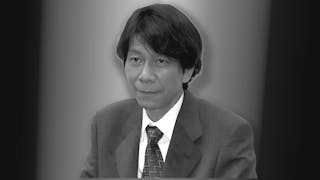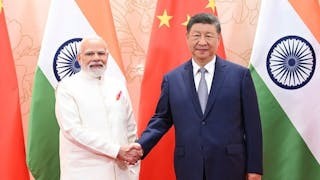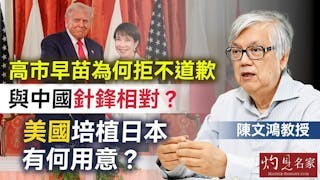自2001年9月11日世界貿易中心恐怖分子劫持飛機襲擊以來,當今世界的戰爭已經呈現出一些新型態,這些新型態似乎決定未來幾十年戰爭的走向,其中最突出的莫過於混合戰爭。
混合戰爭融合了游擊戰術、恐怖主義、間諜活動、滲透、情報收集、精確規劃與執行、高科技運用、大規模無人機部署、網絡攻擊以及發射彈道飛彈等多種元素。
例如,哈馬斯襲擊以色列的行動就包括使用降落傘襲擊平民、恐怖分子滲透敵方領土以及綁架和殺害平民。以色列軍隊則採取了強硬的掃蕩戰術,除了使用飛彈和其他常規武器報復,並且徹底摧毀了加沙地帶所有地下掩護體和隱藏的軍火庫。
在俄烏戰爭中,俄羅斯軍隊首先對烏克蘭敵方目標實施網絡攻擊,隨後動用彈道飛彈、傳統坦克和軍隊。烏克蘭則採用彈道飛彈保衛國土並攻擊敵方目標,對庫爾斯克地區發動突襲,並在最近的「蜘蛛網行動」中動用無人機摧毀俄羅斯軍用飛機。
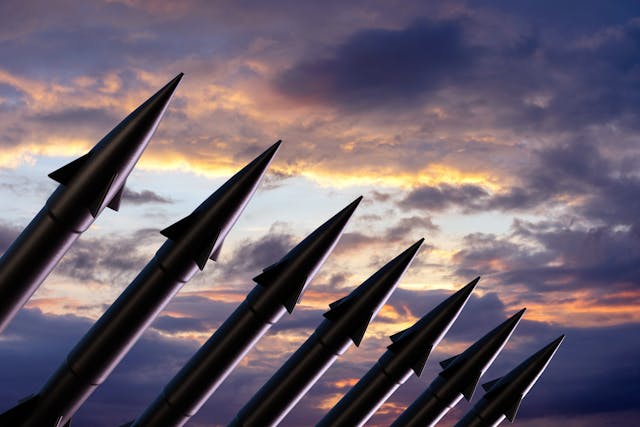
以色列先發制人 摧毀伊朗軍事目標
在以伊戰爭中,以色列使用彈道飛彈和無人機精準摧毀所有敵方目標。伊朗則使用跨境的彈道飛彈予以回擊。這次以伊戰爭最突出的地方是,以色列對伊朗的軍事將領和頂尖科學家實施了先發制人的打擊,因為以色列認為伊朗的鈾濃縮程度已非常接近制造核彈的水平。
這些衝突突顯了現代戰場日益複雜的模糊性,戰鬥人員與非戰鬥人員、國家與非國家行為者,以及實戰與網絡戰之間界線已變得模糊。
在當代戰爭中,雙方可用的武器庫已不再局限於常規武器或傳統的軍事等範疇;相反,它涵蓋了一系列旨在從多個層面擾亂、打擊和瓦解對手的戰略部署和技術操作。這些方法具有不可預測性、快速升級能力以及對軍事人員和平民的深遠心理影響,打擊效果令人印象深刻。
此外,科技使戰爭工具民主化和激進化,使小規模的團體甚至個人,能夠對規模大得多的對手發動不對稱戰爭。廉價無人機、加密通訊和網絡能力的普及,使非國家行為實體能夠以前所未有的方式影響衝突進程。這種情況要求各國和軍隊迅速適應,不僅要學習如何防禦這些多方面的威脅,還要學習如何預測混合戰爭的下一個變化。

假訊息氾濫 真相有理說不清
同時,網絡世界已成為衝突的重要戰場。假訊息、宣傳、間諜活動和心理戰可以如同彈道飛彈般精準部署,旨在摧毀遠離前線的社會認知、士氣和凝聚力。社群媒體平台、新聞周期和數位通訊被用作武器,用來塑造敘事、為行動辯護、掩蓋暴行,使真相本身往往備受爭議,很難獲得大眾信任。
其次,代理人戰爭可以被視為當代戰爭的另一個新特徵。最好的例子是烏克蘭,在拜登政府時期,俄羅斯將烏克蘭視為美國及其以美國為首的西方盟友(包括北約成員國)的「代理人」。2025年初特朗普第二次當選總統後不久,美國對俄烏外交政策的轉變,為和平解決俄烏戰爭提供契機。
然而,這場戰爭不僅深受俄方極限進迫所影響,歐洲國家(尤其是法國、英國和德國)亦擔心,特朗普政府對俄羅斯的過度讓步,將損害烏克蘭和北約成員國的利益。俄烏戰爭的挑戰在於雙方是否願意讓步,以防止代理人戰爭升級為大型戰爭,讓更多北約國家捲入這場席捲歐洲的大戰。
當代戰爭背後隱藏意識形態分歧
第三,當代戰爭背後隱藏着意識形態分歧。俄烏戰爭的幕後推手,很大程度上是由西方資本主義民主國家與非西方威權國家之間嚴重的意識形態分歧所造成。北約仍然將俄羅斯視為與舊蘇聯看齊的國家,其真正的領土野心是恢復蘇聯帝國的領土;而俄羅斯則得到了非西方威權國家的支持,尤其是北韓和中國。美國及其盟友則認為中國向俄羅斯提供了軍民兩用的產品,不僅有助該國民用經濟,也有利其軍事後勤的補給。
儘管中國否認向俄羅斯提供軍民兩用產品,但俄方似乎憑藉與中方和睦的經濟關係,很好地應對了西方國家的經濟制裁。俄羅斯與北韓密切的經濟和軍事夥伴關係,也引起了美國及其歐洲盟友的警覺。
另一方面,中國與以美國為首的盟友之間的意識形態鬥爭愈益激烈,尤其在南海島礁與菲律賓的紛爭中可見一斑。
菲律賓曾訴諸國際仲裁解決紛爭,但遭中國拒絕。中菲兩國迄今一直在利用各自的海上力量,相對和平且嫻熟地處理領土爭端,但背後卻是兩個有意識形態傾向的超級大國的政治博弈。
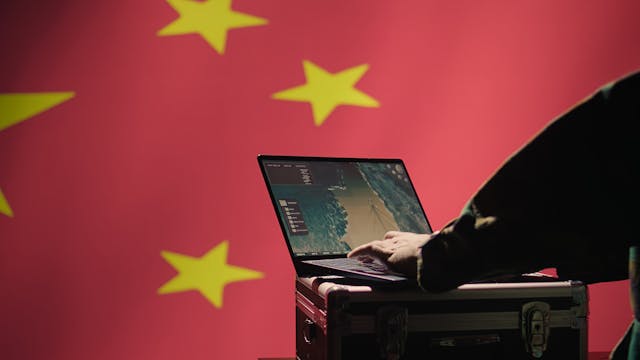
美日視中國軍事現代化為真正威脅
菲律賓在意識形態和軍事上都得到了美國和日本的支持,美日兩國將中國的軍事崛起和現代化視為對他們利益的真正威脅。幸好中菲兩國圍繞南海島水域的爭端和海上衝突尚未釀成兩國戰爭。
亞太地區迄今相對平穩,但最近印度和巴基斯坦之間因克什米爾問題突然爆發爭執和衝突的三天戰爭,令許多觀察人士感到驚訝。儘管印度和中國就邊界爭端進行了一系列高層軍事談判,並達成了從爭議地區撤軍的和平共識,但巴基斯坦和印度之間突然爆發的戰爭(儘管持續時間很短),卻突顯了這兩個南亞地區大國之間和平的脆弱性。
第四,當代戰爭正在呈現其他新形式,包括貿易戰和關稅戰、技術戰(控制半導體生產技術的出口)、資源戰(控制稀土出口)以及港口控制戰(美國一直熱衷於限制任何與中國相關的公司(如和記黃埔)管理巴拿馬運河港口的能力)。
當今世界已經出現了大規模、非常規的戰爭,主要是因為世界正從美國主導的單極世界,向多極世界艱難轉型。正當美國的軟和硬實力都在下降,而中國、伊朗、北韓和巴基斯坦等國家正在迅速崛起,這些國家已經擁有或接近擁有生產核武的能力。
特朗普政府視中國為頭號敵人
特朗普政府領導下的美國將中國視為頭號敵人,必須遏制中國的經濟崛起,必須審查中國在美留學生;而中國向世界其他地區提供的基礎設施建設和經濟援助,則被視為對美國國家利益和其全球主導地位的地緣政治威脅。
當代世界戰爭目前僅限於烏克蘭、以色列和伊朗等一些地區,並未蔓延至歐洲和中東的更多國家,更遑論亞洲。亞洲國家在處理衝突方面一直相當出色,且相對寬容。然而,第三次世界大戰是必須避免的,但若然戰爭不能通過外交獲得妥善處理,它的風險將逼近眉睫。

近年來,隨着中國經濟和軍事的快速崛起,加上其廣泛運用外交手段處理與別國領土和經濟爭端。外交仍然是世界維持相對和平的重要因素。
中國一直倡導多邊主義的重要性,其中,聯合國等國際組織在呼籲衝突各方停止戰爭、繼續對話與談判方面仍然發揮關鍵作用。在美國表現出對國際組織在處理國家間爭端方面的不信任跡象之際,中國卻在處理國際關係方面採取了更為開明的態度。因此,世界和平得以維持,或許是因為中國和伊朗等新興大國仍願意運用外交手段來處理國際衝突和爭端。
值得慶幸的是,強調外交手段和依靠多邊主義──不同國家試圖透過對話談判,以及在國際組織中舉行會議和討論來解決彼此分歧──仍然是防止當代戰爭進一步惡化為全球大規模戰爭的兩大支柱。從這個意義上講,新的全球安全範式必須承認威懾不再只是軍事的,也是經濟的、資訊和外交的。
因此,和平是一個積極的過程,需要耐心、智慧以及跨地區、跨領域的持續多邊合作。由於前蘇聯解體後從美國主導的單極世界,轉向更不確定的多極世界,但轉型過程艱難且不穩定,如今世界和平可謂相當脆弱。在這個多極世界中,許多新興大國不僅在經濟上,且更在軍事和政治上,對美國的霸權及其盟友的國家利益構成挑戰。
因應全球格局變化 須重構安全框架
展望未來,因應全球衝突格局的變化,我們須要重新構思傳統的安全框架,並培養更具韌性但更具彈性的聯盟,這些聯盟更重視外交而非戰爭和衝突。任何地區戰爭的連鎖反應都可能遠遠超出戰區的範圍,從供應鏈到能源市場甚至糧食安全等各個層面都受到波及。這種相互聯繫加劇了局部爭端的風險,因此,謹慎權衡軟和硬實力至關重要,以防止當代戰爭升級為另一場世界大戰。
缺乏明確的國際標準加劇了誤判和意外後果的風險,尤其是在國家和非國家行為體競相利用這些進步來獲取戰略利益的情況下。所謂的基於規則的秩序正受到挑戰,特別是因為這些規則被視為是由霸權國家及其追隨者在過去所制定的。
世界各國面臨的巨大挑戰或許在於,一方面如何尊重和遵循過往已達成一致的規則,另方面又如何更新、修訂和完善那些存在差距和爭議的規則。
簡言之,對未來衝突的管理,將取決於各國是否願意求同存異,並堅持對話與談判,所以外交不僅是危機管理的工具,更能在這個持續衝突的世界中,成為維護穩定和希望的積極力量。
Contemporary warfare: New features and implications
Since the terrorist hijacking of aeroplanes in the attack of the World Trade Center on 11 September 2001, contemporary warfare in the world has taken some new forms which appear to shape how wars are going to be conducted in the coming decades.
First, a hybrid type of warfare, as mentioned by some analysts, has emerged as the most prominent feature of contemporary wars. Specifically, hybrid warfare combines the ingredients of guerilla tactics, terrorism, espionage, infiltration, intelligence gathering, precision planning and execution, the utilisation of high technology, the mobilisation of a massive number of drones, cyberattacks, and the shooting of ballistic missiles. The action of Hamas in attacking Israel, for example, displayed a number of features, including the use of parachutes to attack civilian population, the infiltration of terrorists into the enemy soil, and the kidnapping and killing of civilians. In response, the Israeli military has been adopting hardline and mopping-up tactics, penetrating into Gaza militarily, utilising missiles and other conventional weapons and accompanied by the total elimination of all underground bunkers and hidden arsenals in Gaza.
In the Russo-Ukrainian war, the Russian military attacked Ukraine by firstly conducting cyberattacks on enemy targets, and by the utilisation of ballistic missiles and traditional tanks and army. In response, Ukraine has been adopting ballistic missiles to defend its soil and attack the enemy targets, using surprise attacks on the Kursk region, and mobilising drones in a recent Spiderweb Operation to destroy Russian military aircraft after a successful infiltration of these deadly weapons into the Russian territories.
The most recent and ongoing Israeli-Iranian war has been characterised by the Israeli precision target of eliminating key military leaders and core scientists and deploying ballistic missiles to destroy all the enemy targets accurately. In response, Iran has been using cross-national and cross-boundary ballistic missiles to retaliate against the Israeli attacks. The most prominent feature of the ongoing Israeli-Iranian war is that Israel adopted a pre-emptive strike at the targeted military leaders and top scientists in Iran because of its assessment that Iran has enriched uranium to the extent of being remarkably close to producing nuclear bombs. As Israel perceived Iran as a “real” military threat to its state survival, the pre-emptive strike was regarded as “necessary.”
These conflicts illustrate the increasing complexity and ambiguity of modern battlefields, where the boundaries between combatants and non-combatants, state and non-state actors, and physical and digital fronts are blurred. The arsenal available to both sides in contemporary warfare is no longer limited to conventional weapons or traditional military hierarchy; rather, it encompasses a web of strategies and technologies that aim to disrupt, demoralise, and destabilise opponents on multiple levels. The effectiveness of such approaches is demonstrated by the unpredictability of outcomes, the speed of escalations, and the profound psychological impacts on both military personnel and civilian populations.
Moreover, technology has democratised and radicalised the tools of war, allowing smaller groups or even individuals to wage asymmetric campaigns against much larger adversaries. The proliferation of cheap drones, encrypted communications, and cyber capabilities has made it possible for non-state actors to influence the course of conflicts in unprecedented ways. This landscape requires states and militaries to adapt swiftly, learning not only how to defend against these multifaceted threats but also how to anticipate the next evolution in hybrid tactics.
At the same time, the information space has become a vital theatre of conflict. Misinformation, propaganda, espionage, and psychological operations are deployed with as much precision as ballistic missiles, targeting the perceptions, morale, and cohesion of societies far from the front lines. Social media platforms, news cycles, and digital communications are weaponised to shape narratives, justify actions, and obscure atrocities, making the truth itself a contested and volatile asset.
Second, proxy wars can be seen as another new feature of contemporary warfare. The best example is Ukraine, which was seen by Russia as a “proxy” for the US under the Biden administration and US-led Western allies including NATO members. The shift in US foreign policy towards Russia and Ukraine shortly after Donald Trump’s second presidential victory in early 2025 has interestingly offered a window of opportunity for a peaceful resolution of the Russo-Ukrainian war, which however is deeply affected by not only the maximal demands made by the Russian side but also the anxieties of European states, notably France, the UK and Germany, that excessive concessions made to Russia by the Trump administration will constitute either a zero-sum game or a settlement detrimental to the interests of Ukraine and the NATO members. The challenge of the Russo-Ukrainian war is whether both sides are willing to make concessions so that a proxy war will be prevented from escalating into a large-scale warfare dragging more NATO members into an extensive war spreading across Europe.
Third, a hidden ideological divide is behind the contemporary warfare. The Russo-Ukrainian war is behind-the-scenes shaped heavily by a serious ideological divide between the Western capitalistic democracies and non-Western authoritarianism. The Western-led NATO still perceives Russia as a state parallel to the old Soviet Union with the real territorial ambition of restoring the territories of the Soviet empire, while Russia is backed by non-Western authoritarian states, notably North Korea and also China. North Korea even sent 12,000 soldiers and military officers to help Russia repel the Ukrainian offensive in Kursk, while China has been perceived by the US and its allies as providing “dual use” goods beneficial to not only the civilian usage but also military logistical supplies in Russia. Although China has denied that it provides civilian-military goods to Russia, Moscow has appeared to deal with economic sanctions from the Western states quite well with its harmonious economic relations with Beijing. Moscow’s close economic and military partnership with North Korea has also alarmed the US and its allies in Europe.
On the other hand, ideological struggles between China and the US-led allies, notably the Philippines, can be seen in the disputes over some reefs and islands in the South China Sea. The Philippines resorted to international legal arbitration whose result, however, was rejected by China. Although so far China and the Philippines have been managing their territorial disputes relatively peacefully and skilfully by utilising their maritime vessels, superpower politics are behind the scenes with ideological inclinations. Specifically, the Philippines is supported ideologically and militarily by the US and Japan, which have been perceiving the military rise and modernisation of China as a “real” threat to American and Japanese national interests. Fortunately, so far, the territorial disputes and maritime conflicts between China and the Philippines over the reefs in the South China Sea have not yet erupted into any warfare.
The Asia-Pacific region is so far relatively peaceful, but the recent three-day war between India and Pakistan that suddenly argued and waged conflicts over Kashmir has surprised many observers. While India and China came to a peaceful consensus by withdrawing their military from disputed regions after a series of high-level military negotiations between the two sides over their border disputes, the sudden eruption of warfare, albeit very short, between Pakistan and India has shown the fragility of peace between the two South Asian regional powers.
Fourth, contemporary warfare is taking other new forms, including trade and tariff wars, technology war (the control of export of the technology of producing semiconductors), resources war (the control of export of rare earth), and the war over controlling ports (the Panama Canal where the US has been keen to curb the ability of any China-related companies, like C. K. Hutchison, to manage ports).
This extensive and unconventional contemporary warfare in the world has already been seen mainly because of the difficult transition from a unipolar world led by the US to a perhaps multipolar world in which both hard and soft powers of the US are declining in face of the rapidly rising states, notably China, Iran, North Korea and Pakistan that have developed capability or near-capability of producing nuclear weapons. Israel as a close US ally did perceive, as mentioned before, Iran’s near capability of producing nuclear weapons as a “real” threat, especially as Israel is a small state compared with Iran. The US under the Donald Trump administration is seeing China as the top enemy whose economic rise has to be curbed, whose students in the US have to be screened, and whose infrastructure outreach and economic aid to other parts of the world have been seen as a geopolitical threat to Washington’s national interest and global dominance.
Fortunately, contemporary warfare in the world is now confined to some regions, like Ukraine, Israel and Iran without spreading across to more countries in Europe and the Middle East, not to mention Asia where Asian states have been managing their conflicts quite well and relatively tolerantly. Still, a World War III has to be avoided and is sadly approaching if contemporary warfare is not managed skilfully and diplomatically.
One key factor that contributes to temporary world peace amid regional warfare is the utilisation of diplomacy. The recent rapid economic and military rise of China has been accompanied by its widespread use of diplomacy to deal with territorial and economic disputes with other countries. Diplomacy is still an important shaper that helps the world maintain relative peace, like the efforts of the UK, France and Germany to act as middlemen between Iran and Israel, and to act as checks and balances against an oscillating US that may shift to protect Russian interests more than Ukrainian interests in the Russo-Ukrainian war.
China has also been championing the importance of multilateralism in which international organisations, like the UN and others, are still playing a crucial role in appealing to conflicting parties to terminate warfare and to continue dialogue and negotiations. At a time when the US has shown signs of distrusting international organisations in tackling state-to-state disputes, China has been interestingly adopting a far more liberal approach to coping with international relations. As such, world peace is still maintained perhaps because the rising powers, such as China and Iran, are still opening to the utilisation of diplomatic finesse in dealing with international conflicts and disputes.
In conclusion, contemporary warfare in the 21st century is now characterised by the hybrid nature of war, combining guerilla tactics, terrorism, espionage, infiltration, intensive intelligence gathering, the utilisation of high technology, the mobilisation of drones, cyberattacks, and the shooting of ballistic missiles. Contemporary warfare is also punctuated by proxy wars with a high degree of ideological struggles and disputes behind the scenes. It has also taken new forms, notably trade and tariff war, high-tech war, energy and resources war, and the war over the control of strategic ports in the world. Fortunately, the emphasis on diplomacy and the reliance on multilateralism in which different nations and states attempt to resolve their differences through dialogue and negotiations, and through the meetings and discussions in international organisations, remain the twin pillars in refraining contemporary warfare from deteriorating further into a large-scale warfare in the whole world. In this sense, the new global security paradigm must acknowledge that deterrence is no longer solely military, but also economic, informational, and diplomatic.
Peace, therefore, becomes an active process, requiring patience, ingenuity, and sustained multilateral cooperation across regions and domains. Hopefully, diplomacy and international organisations amid the ideology of multilateralism can and will bring about continuous world peace, which is now quite fragile because of the difficult and precarious transition from the formerly US-led unipolar world after the collapse of the former Soviet Union to a more uncertain multipolar world in which many rising new powers are challenging the hegemony of the US, and the national interests of its allies, not only economically but also militarily and politically.
Looking ahead, the evolving landscape of global conflict calls for a reimagining of traditional security frameworks and the cultivation of resilient but ironically more fluid alliances that cherish diplomacy over wars and conflicts. The growing interdependence of economies and technological infrastructures means that the ripple effects of any regional war can be felt far beyond the immediate theatre of operations, impacting everything from supply chains to energy markets and even food security. This interconnectedness amplifies the stakes of local disputes, making careful calibration of both hard and soft power essential to prevent escalation of contemporary warfare to another world war.
Moreover, as emerging technologies—such as artificial intelligence, autonomous weapons systems, and quantum communications—find their way onto the battlefield, there is a pressing need for new norms and agreements to govern their use. The absence of clear international standards heightens the risk of miscalculation and unintended consequences, especially as states and non-state actors race to exploit these advancements for strategic gains. The rapid pace of innovation challenges diplomatic institutions to keep up, creating an urgent imperative for dialogue between technologists, policymakers, and military leaders. The so-called rules-based order has been challenged especially as these rules are seen as being determined by hegemonic states and their followers in the past. Perhaps a huge challenge for the states in the world is how to respect and follow the rules that were agreed upon on the one hand, and how to update, revise and refine those rules that show gaps and disputable areas on the other hand.
Ultimately, the future of conflict management will depend on a willingness of all states in the world to embrace differences and complexities, to foster adaptability, and to persist in dialogue and negotiations. In this way, diplomacy remains not just a tool of crisis management, but a proactive force for stability and hope in a world increasingly defined by uncertainties and constant conflicts.
原刊於澳門新聞通訊社(MNA)網站,本社獲作者授權轉載。(原文按此)





